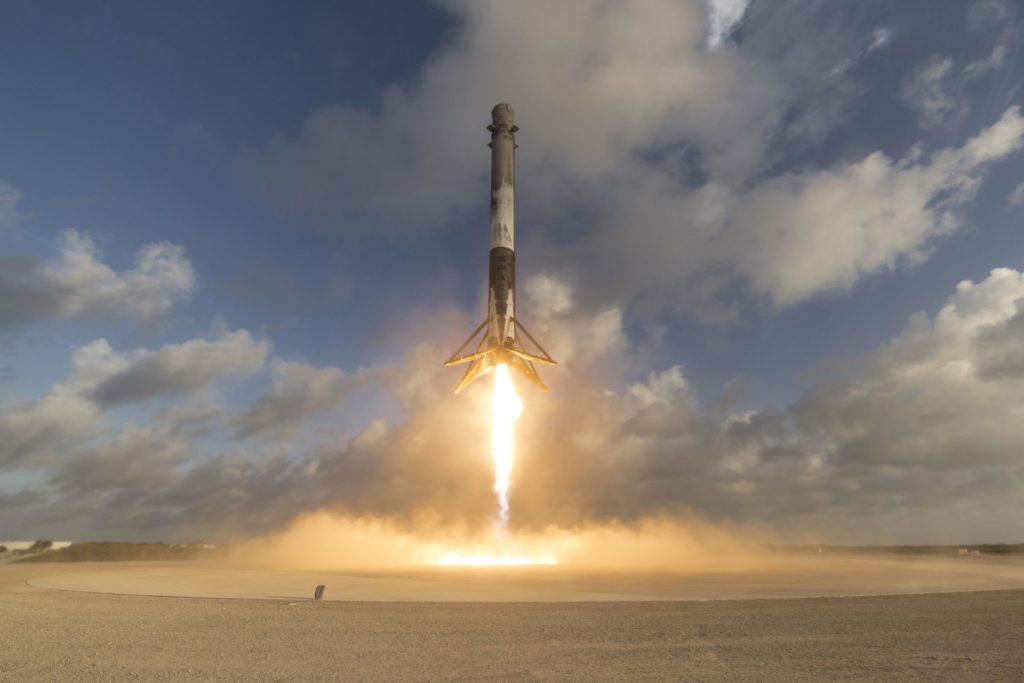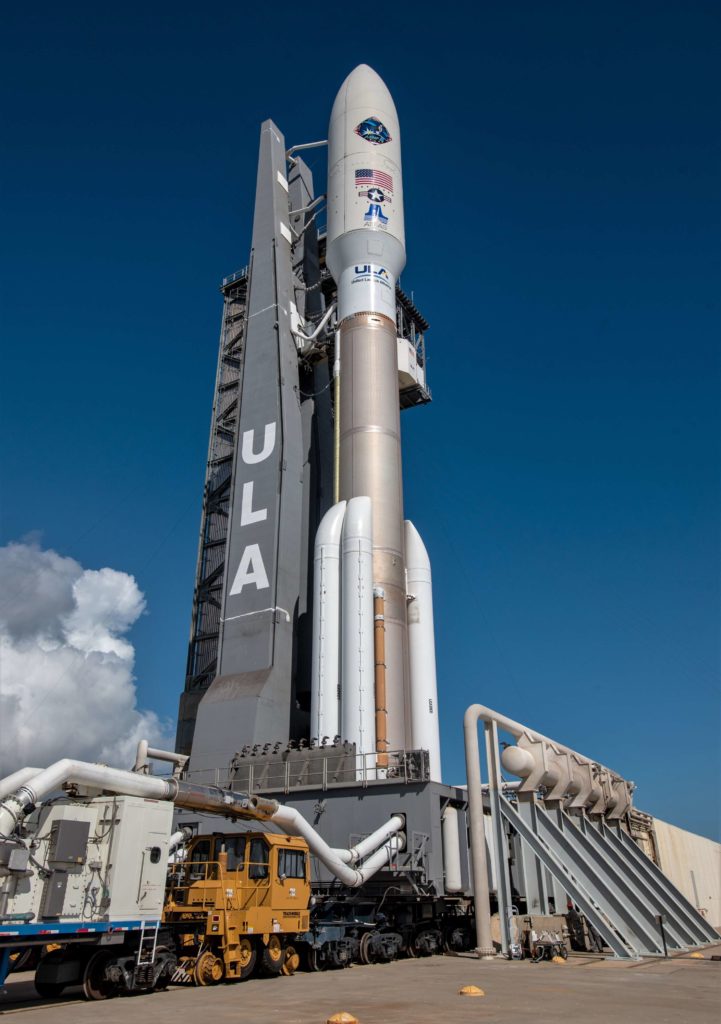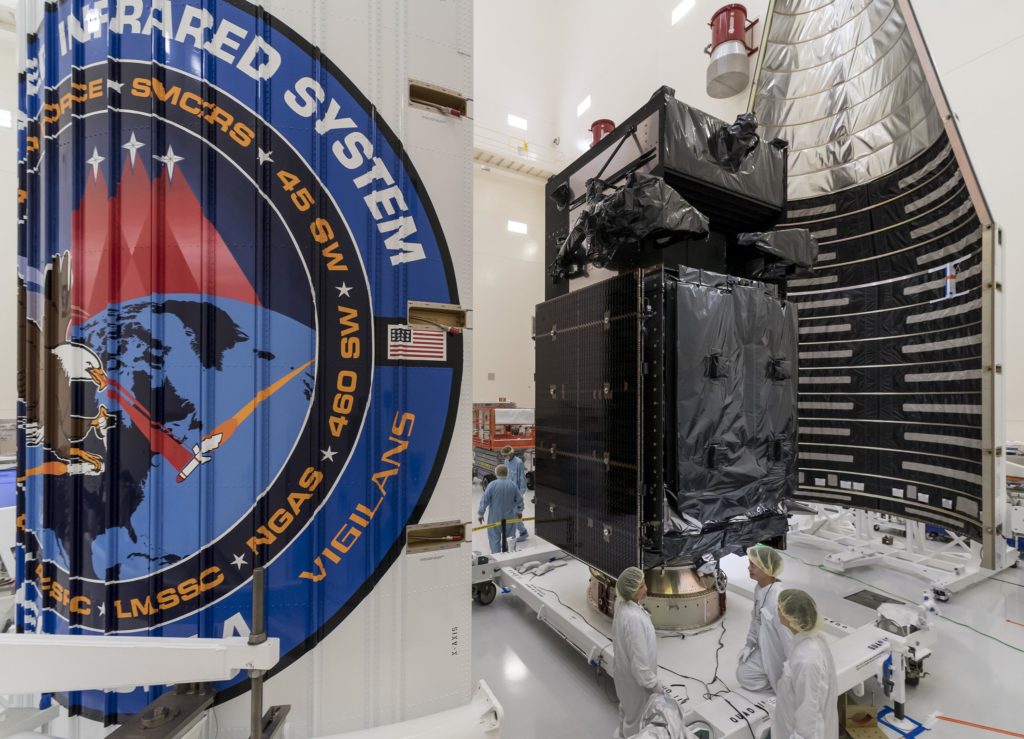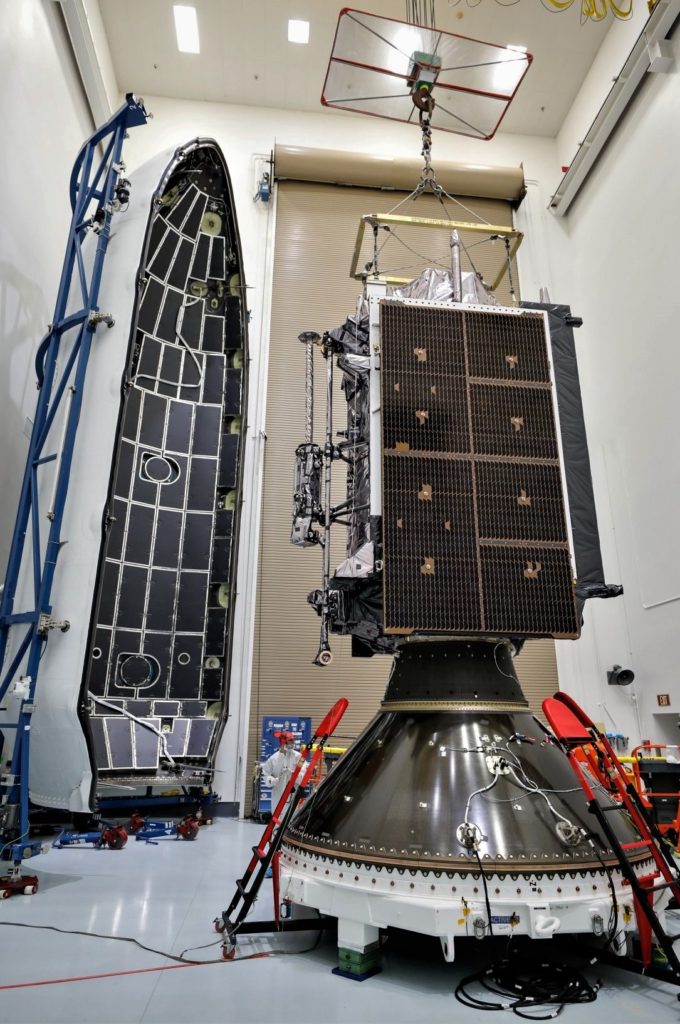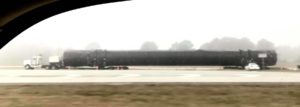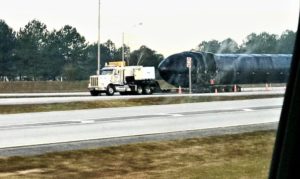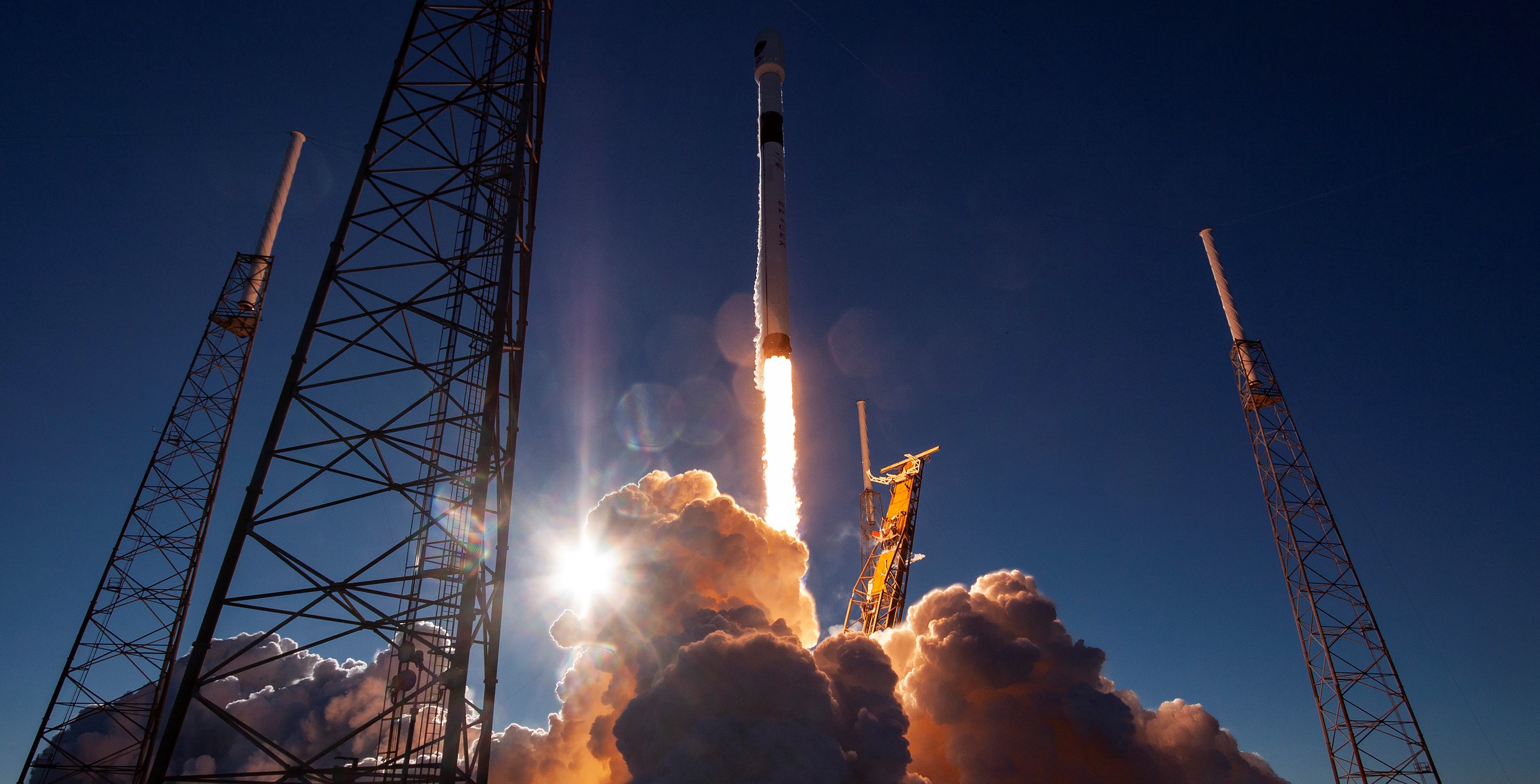

SpaceX
SpaceX’s Falcon 9 and Falcon Heavy win $297M in US military launch contracts
SpaceX and competitor United Launch Alliance (ULA) have been awarded three US military launch contracts apiece with an overall value of $297M (SpaceX) and $442M (ULA). While unconfirmed, this could mark the fourth launch contract awarded to Falcon Heavy in just half a year.
Set to nominally launch between 2021 and 2022, SpaceX received two contracts from the National Reconnaissance Office (NROL-85 and -87) and one from the USAF (AFSPC-44), while ULA received two missions from the USAF (SBIRS-5 and -6) and one from NRO (SILENTBARKER). While the announcement did not specify launch vehicle arrangements, it’s safe to assume that ULA will be flying SBIRS on Atlas V, while SpaceX will likely fly both NROL payloads on Falcon 9.
JUST IN: Air Force awards $739 million in launch contracts to ULA and SpaceX – https://t.co/6tMHINEk57 https://t.co/NYI2qbF68Y
— Sandra Erwin (@Sandra_I_Erwin) February 19, 2019
“SpaceX is proud that the Air Force has chosen our company to support our country’s defense with these critical national security space launches and to continue providing the best value in launch with the proven Falcon 9 and Falcon Heavy vehicles.” – SpaceX President & COO Gwynne Shotwell, 02/19/2019
“This is a full and open competition. … At present, ULA is the only launch provider certified for the SILENTBARKER and AFSPC-44 missions. However, it is anticipated that in the near future SpaceX will be launching the Falcon Heavy, which may be capable of meeting the SILENTBARKER and AFSPC-44 requirements.” – USAF SMC, 02/02/2018
In official comments made in a follow-up to the finalized RFP (requests for proposals) for the launch contracts the US military awarded On Feb. 19, 2019, the USAF Space and Missile Systems Center (SMC) offered some insight into the thought processes going on behind the scenes of the procurement initiative. While almost nothing is known about the payloads themselves, SMC appeared to confirm that SILENTBARKER (believed to be NROL-107) and AFSPC-44 could only be launched on ULA rockets at the time (Feb. 2018), although SpaceX’s Falcon Heavy was also reportedly an option. Provided just a few days before Falcon Heavy’s launch debut, SMC’s tentative inclusion of FH was understandable.
- After launching NROL-76 in May 2017, B1032 returned to Landing Zone-1 for a successful landing. (SpaceX)
- Atlas V 551 prepares to launch USAF satellite AEHF-4. (ULA)
- SBIRS GEO 3 (Flight 4) encapsulation. (USAF)
- GPS III SV01 is encapsulated in Falcon 9’s fairing. (SpaceX)
For a bit of historical context, SpaceX completed its first NRO mission (NROL-76) in May 2017 for an unknown sum, although safe estimates peg the Falcon 9 launch cost somewhere around $80-100M. SpaceX’s first official USAF EELV mission, the first upgraded GPS III satellite, was completed in December 2018 for around $82M (2016) and won an additional three GPS III launch contracts at an average per-mission value of ~$97M. Each GPS III satellite is estimated to cost no less than $573M, while the last four SBIRS (Space-Based Infrared System) geostationary satellites infamously wound up costing more than $1.7 billion apiece as a consequence of prime contractor Lockheed Martin incurring multiple delays and breaching price targets. SBIRS-5 and -6 were said by a Lockheed Martin executive to likely cost “20% less” than SBIRS 1-4, implying that each spacecraft will carry a price tag of at least $1.4B.
Given the sheer cost of the spacecraft and the Air Force’s stance on the SBIRS constellation being a critical part of ballistic missile early-warning defenses, it’s not particularly surprising that Atlas V was chosen over Falcon 9 or Falcon Heavy, a decision likely made to minimize latent risk – however little.

Falcon Heavy – contract #6?
In June 2018, the USAF announced that it had officially certified Falcon Heavy for Air Force missions and awarded SpaceX’s newest launch vehicle a $130M contract to launch its Air Force Space Command-52 spacecraft (AFSPC-52) in 2020. Weighing around 6350 kg (14,000 lbs), Falcon Heavy is tasked with placing the spacecraft into a geostationary transfer orbit of 185 by 35,188 kilometers (115 by 21,900 miles), a mission profile that curiously should be within the performance capabilities of an expendable Falcon 9. If AFSPC-44 is similar to -52, it could be launched by either SpaceX rocket and SMC’s vague $297M award fails to answer any questions thanks to the uncertainty of SpaceX NRO contract pricing. Still, it can be easily determined that SpaceX’s average launch cost ($99M) trounces ULA’s ($147M) by nearly 50%, potentially saving the US government and taxpayer a bit less than $150M.
- SpaceX Facebook group member Joshua Murrah also captured what is likely the third Falcon Heavy booster’s Florida arrival. (Joshua Murrah, 02/11/19)
- SpaceX Facebook group member Joshua Murrah captured two great photos of the second Falcon Heavy side booster to arrive in Florida in the last month. (Joshua Murrah, 01/17/19)
- The second (and third) flight of Falcon Heavy is even closer to reality as a new side booster heads to Florida after finishing static fire tests in Texas. (Reddit /u/e32revelry)
- Falcon Heavy clears the top of the tower in a spectacular fashion during its debut launch. (Tom Cross/Pauline Acalin)
Aside from AFSPC-52 and perhaps AFSPC-44, Falcon Heavy received an additional two commercial contracts from Swedish communications firm Ovzon and US company Viasat in October 2018. Following its February 2018 debut, the rocket’s next two missions (Arabsat 6A and USAF STP-2) are also imminent, with current info pointing to launch targets in March and April 2019, respectively. Combined, Falcon Heavy may now have six solid launch contracts manifested from 2019 to 2021. Meanwhile, NASA and international partners ESA and JAXA (among others) continue to express interest in and work towards the creation of a miniature crewed space station (“Gateway”) in an unusual orbit around the Moon, an aspiration the success of which will heavily depend on affordable commercial launches of a variety of Gateway components and resupply missions, at minimum.
If NASA’s Gateway and crewed Moon lander programs survive the United States’ 2020 election cycle, Falcon Heavy could be called into action as early as 2022 and have numerous additional contract opportunities in the 4+ years following. Ultimately, the US military’s Feb. 19 launch awards confirm that the taxpayer continues to reap the benefits of competition SpaceX has reintroduced into the monopolized US launch industry, while also reiterating the health and commercial value of SpaceX’s Falcon Heavy investment.
Check out Teslarati’s newsletters for prompt updates, on-the-ground perspectives, and unique glimpses of SpaceX’s rocket launch and recovery processes!
News
SpaceX’s Crew-11 mission targets July 31 launch amid tight ISS schedule
The flight will lift off from Launch Complex 39A at Kennedy Space Center in Florida.

NASA and SpaceX are targeting July 31 for the launch of Crew-11, the next crewed mission to the International Space Station (ISS). The flight will lift off from Launch Complex 39A at Kennedy Space Center in Florida, using the Crew Dragon Endeavour and a Falcon 9 booster.
Crew Dragon Endeavour returns
Crew-11 will be the sixth flight for Endeavour, making it SpaceX’s most experienced crew vehicle to date. According to SpaceX’s director of Dragon mission management, Sarah Walker, Endeavour has already carried 18 astronauts representing eight countries since its first mission with NASA’s Bob Behnken and Doug Hurley in 2020, as noted in an MSN report.
“This Dragon spacecraft has successfully flown 18 crew members representing eight countries to space already, starting with (NASA astronauts) Bob (Behnken) and Doug (Hurley) in 2020, when it returned human spaceflight capabilities to the United States for the first time since the shuttle retired in July of 2011,” Walker said.
For this mission, Endeavour will debut SpaceX’s upgraded drogue 3.1 parachutes, designed to further enhance reentry safety. The parachutes are part of SpaceX’s ongoing improvements to its human-rated spacecraft, and Crew-11 will serve as their first operational test.
The Falcon 9 booster supporting this launch is core B1094, which has launched in two previous Starlink missions, as well as the private Ax-4 mission on June 25, as noted in a Space.com report.
The four-members of Crew-11 are NASA astronauts Zena Cardman and Mike Fincke, as well as Japan’s Kimiya Yui and Russia’s Oleg Platonov.
Tight launch timing
Crew-11 is slated to arrive at the ISS just as NASA coordinates a sequence of missions, including the departure of Crew-10 and the arrival of SpaceX’s CRS-33 mission. NASA’s Bill Spetch emphasized the need for careful planning amid limited launch resources, noting the importance of maintaining station altitude and resupply cadence.
“Providing multiple methods for us to maintain the station altitude is critically important as we continue to operate and get the most use out of our limited launch resources that we do have. We’re really looking forward to demonstrating that capability with (CRS-33) showing up after we get through the Crew-11 and Crew-10 handover,” Spetch stated.
News
SpaceX launches Ax-4 mission to the ISS with international crew
The SpaceX Falcon 9 launched Axiom’s Ax-4 mission to ISS. Ax-4 crew will conduct 60+ science experiments during a 14-day stay on the ISS.

SpaceX launched the Falcon 9 rocket kickstarting Axiom Space’s Ax-4 mission to the International Space Station (ISS). Axiom’s Ax-4 mission is led by a historic international crew and lifted off from Kennedy Space Center’s Launch Complex 39A at 2:31 a.m. ET on June 25, 2025.
The Ax-4 crew is set to dock with the ISS around 7 a.m. ET on Thursday, June 26, 2025. Axiom Space, a Houston-based commercial space company, coordinated the mission with SpaceX for transportation and NASA for ISS access, with support from the European Space Agency and the astronauts’ governments.
The Ax-4 mission marks a milestone in global space collaboration. The Ax-4 crew, commanded by U.S. astronaut Peggy Whitson, includes Shubhanshu Shukla from India as the pilot, alongside mission specialists Sławosz Uznański-Wiśniewski from Poland and Tibor Kapu from Hungary.
“The trip marks the return to human spaceflight for those countries — their first government-sponsored flights in more than 40 years,” Axiom noted.
Shukla’s participation aligns with India’s Gaganyaan program planned for 2027. He is the first Indian astronaut to visit the ISS since Rakesh Sharma in 1984.
Axiom’s Ax-4 mission marks SpaceX’s 18th human spaceflight. The mission employs a Crew Dragon capsule atop a Falcon 9 rocket, designed with a launch escape system and “two-fault tolerant” for enhanced safety. The Axiom mission faced a few delays due to weather, a Falcon 9 leak, and an ISS Zvezda module leak investigation by NASA and Roscosmos before the recent successful launch.
As the crew prepares to execute its scientific objectives, SpaceX’s Ax-4 mission paves the way for a new era of inclusive space research, inspiring future generations and solidifying collaborative ties in the cosmos. During the Ax-4 crew’s 14-day stay in the ISS, the astronauts will conduct nearly 60 experiments.
“We’ll be conducting research that spans biology, material, and physical sciences as well as technology demonstrations,” said Whitson. “We’ll also be engaging with students around the world, sharing our experience and inspiring the next generation of explorers.”
SpaceX’s Ax-4 mission highlights Axiom’s role in advancing commercial spaceflight and fostering international partnerships. The mission strengthens global space exploration efforts by enabling historic spaceflight returns for India, Poland, and Hungary.
News
Starlink Cellular’s T-Mobile service to grow with third-party app data
From Oct 2025, T-Satellite will enable third-party apps in dead zones! WhatsApp, X, AccuWeather + more coming soon.

Starlink Cellular’s T-Mobile service will expand with third-party app data support starting in October, enhancing connectivity in cellular dead zones.
T-Mobile’s T-Satellite, supported by Starlink, launches officially on July 23. Following its launch, T-Mobile’s Starlink Cellular service will enable data access for third-party apps like WhatsApp, X, Google, Apple, AccuWeather, and AllTrails on October 1, 2025.
T-Mobile’s Starlink Cellular is currently in free beta. T-Satellite will add MMS support for Android phones on July 23, with iPhone support to follow. MMS support allows users to send images and audio clips alongside texts. By October, T-Mobile will extend emergency texting to all mobile users with compatible phones, beyond just T-Mobile customers, building on its existing 911 texting capability. The carrier also provides developer tools to help app makers integrate their software with T-Satellite’s data service, with plans to grow the supported app list.
T-Mobile announced these updates during an event celebrating an Ookla award naming it the best U.S. phone network, a remarkable turnaround from its last-place ranking a decade ago.
“We not only dream about going from worst to best, we actually do it. We’re a good two years ahead of Verizon and AT&T, and I believe that lead is going to grow,” said T-Mobile’s Chief Operating Officer Srini Gopalan.
T-Mobile unveiled two promotions for its Starlink Cellular services to attract new subscribers. A free DoorDash DashPass membership, valued at $10/month, will be included with popular plans like Experience Beyond and Experience More, offering reduced delivery and service fees. Meanwhile, the Easy Upgrade promotion targets Verizon customers by paying off their phone balances and providing flagship devices like the iPhone 16, Galaxy S25, or Pixel 9.
T-Mobile’s collaboration with SpaceX’s Starlink Cellular leverages orbiting satellites to deliver connectivity where traditional networks fail, particularly in remote areas. Supporting third-party apps underscores T-Mobile’s commitment to enhancing user experiences through innovative partnerships. As T-Satellite’s capabilities grow, including broader app integration and emergency access, T-Mobile is poised to strengthen its lead in the U.S. wireless market.
By combining Starlink’s satellite technology with strategic promotions, T-Mobile is redefining mobile connectivity. The upcoming third-party app data support and official T-Satellite launch mark a significant step toward seamless communication, positioning T-Mobile as a trailblazer in next-generation wireless services.
-

 Elon Musk2 weeks ago
Elon Musk2 weeks agoTesla investors will be shocked by Jim Cramer’s latest assessment
-

 News2 days ago
News2 days agoTesla debuts hands-free Grok AI with update 2025.26: What you need to know
-

 Elon Musk5 days ago
Elon Musk5 days agoxAI launches Grok 4 with new $300/month SuperGrok Heavy subscription
-

 Elon Musk7 days ago
Elon Musk7 days agoElon Musk confirms Grok 4 launch on July 9 with livestream event
-

 News2 weeks ago
News2 weeks agoTesla Model 3 ranks as the safest new car in Europe for 2025, per Euro NCAP tests
-

 Elon Musk2 weeks ago
Elon Musk2 weeks agoxAI’s Memphis data center receives air permit despite community criticism
-

 News4 days ago
News4 days agoTesla begins Robotaxi certification push in Arizona: report
-

 Elon Musk2 weeks ago
Elon Musk2 weeks agoTesla scrambles after Musk sidekick exit, CEO takes over sales

